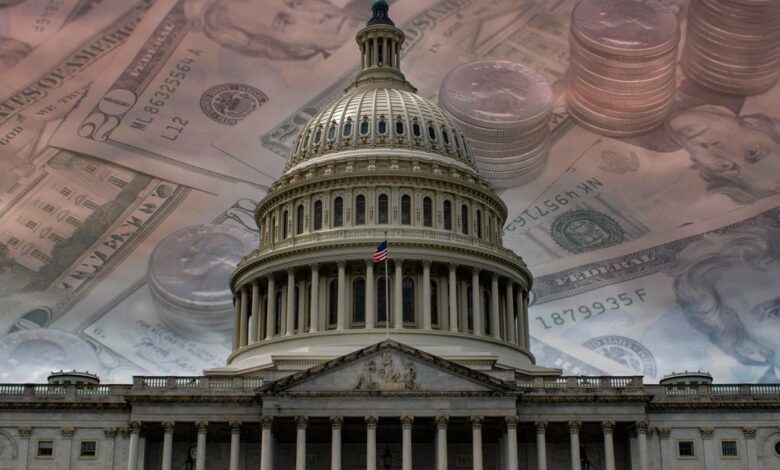The U.S. spends $1 trillion a year to service its debt. Here’s why experts say that’s a concern.

The Republicans’ “big beautiful” budget package is sparking concerns from a wide range of experts and stakeholders, including Tesla CEO Elon Musk and Wall Street analysts. The main issue at hand is the rising cost of servicing the U.S. government’s growing debt, which is reaching unprecedented levels.
In 2024, the U.S. spent $1.1 trillion on interest payments for its debt, nearly double the amount from five years prior. This figure surpasses the nation’s defense spending, highlighting the magnitude of the issue. The Congressional Budget Office projects that the Republican tax and spending bill could further exacerbate this problem, potentially increasing the federal deficit by $2.4 trillion over the next decade. This would result in additional interest payments of around $550 billion in the same timeframe and could lead to interest costs reaching $1.8 trillion by 2035.
The escalating interest payments pose a significant threat to the nation’s fiscal stability, as they could crowd out funding for vital programs like Social Security. Federal interest payments as a share of the GDP are expected to rise from 3% to 4.1% by 2035, further straining the government’s financial resources.
While some Republicans argue that the proposed tax cuts in the bill will spur economic growth, critics, including Democrats, warn that it will primarily benefit wealthier Americans and add to the national debt. The bill’s passage has triggered a debate over its long-term impact on the country’s financial health.
Tesla CEO Elon Musk and Wall Street analysts have voiced their concerns about the escalating debt and interest payments. Moody’s Ratings recently downgraded U.S. credit, citing worries about the nation’s increasing debt burden. The White House, however, maintains that the GOP tax bill will improve the nation’s fiscal trajectory and stimulate economic growth.
The surge in interest payments can be attributed to COVID-related spending bills and the Federal Reserve’s decision to raise interest rates. The national debt has soared from $27 trillion in 2020 to $35.5 trillion in 2024, while the Fed’s benchmark interest rate climbed from near zero percent to over 5%. The extension of President Trump’s tax cuts in the Republican budget bill is expected to widen the deficit and add to interest costs.
Experts caution that the U.S. could face financial strain in servicing its debt, especially in the event of an economic downturn. The looming threat of a recession and financial crisis due to the nation’s massive debt remains a cause for concern among financial experts.
As the nation grapples with the mounting debt and interest payments, policymakers must carefully consider the long-term implications of their fiscal decisions to ensure the country’s economic stability and prosperity in the years to come.




